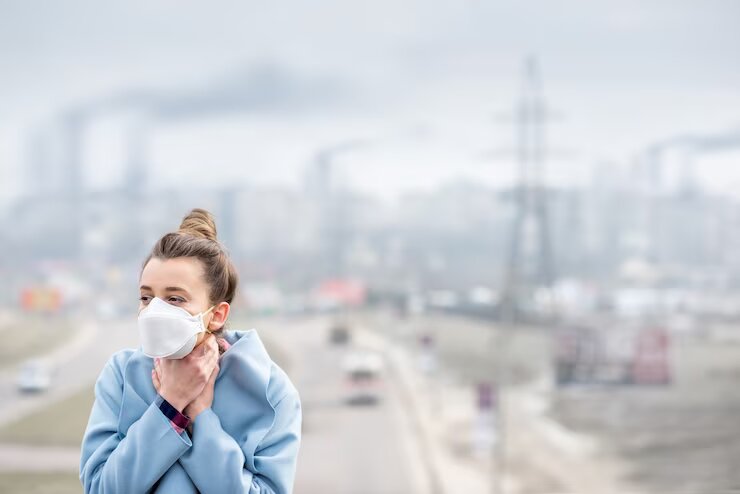Are you aware that the air we breathe may be causing respiratory diseases? Yes, it’s true! With the alarming rise in air pollution levels worldwide, there has been a significant increase in respiratory illnesses. From asthma to lung cancer, air pollution is proving lethal to our health. In this blog post, we will delve deeper into the issue of breathing in danger and explore how air pollution is affecting our respiratory system. So stay tuned as we uncover some shocking facts about the link between air pollution and respiratory diseases.
The Dangers of Air Pollution
Air pollution is a growing problem worldwide, and it’s taking a toll on our respiratory health. A new study finds that air pollution is linked to an increased risk of respiratory diseases, including asthma, bronchitis, and COPD.
The study, published in the journal Lancet Planetary Health, looked at data from over 131 million people in 195 countries. The researchers found that air pollution was associated with a higher risk of respiratory disease, even at low levels of exposure.
The findings underscore the need for action to reduce air pollution, which is a major public health hazard. Air pollution has been linked to a variety of other health problems, including heart disease, stroke, and cancer.
Reducing air pollution will require a concerted effort from governments, businesses, and individuals. We need to switch to cleaner energy sources, such as renewable energy, and put in place better laws and regulations to protect our air quality. We also need to do a better job of managing our waste so that it doesn’t end up polluting the air we breathe.
The Alarming Rise of Respiratory Diseases Linked to Air Pollution
The World Health Organization reports that nearly 4.2 million people worldwide died from exposure to outdoor air pollution in 2016 – that’s one in every ten deaths. The majority of these premature deaths were due to cardiovascular disease and strokes, but chronic respiratory diseases such as asthma, bronchitis and lung cancer were also responsible for a significant portion of the fatalities.
While the link between air pollution and respiratory diseases has long been established, the scale of the problem is only now becoming apparent. A recent study published in the journal Nature found that air pollution is responsible for an estimated 8.8 million new cases of chronic respiratory disease in children each year. This is particularly alarming given that children are more susceptible to the effects of air pollution than adults due to their higher breathing rate and developing lungs.
There are a number of contributing factors to the alarmingly high rates of respiratory disease linked to air pollution. First, there has been a dramatic increase in the use of fossil fuels such as coal and oil over the past century. This has led to a significant increase in harmful emissions such as nitrogen dioxide, sulfur dioxide and particulate matter being released into the atmosphere. Second, rapid urbanization means that more people are living in close proximity to sources of air pollution, increasing their exposure levels. Finally, climate change is making the problem worse by exacerbating existing air quality issues and creating new ones.
The good news is that there are steps we can take to reduce our exposure to harmful
The Effects of Air Pollution on the Body
Air pollution has been linked to a wide range of respiratory problems, from mild irritation to more serious conditions like bronchitis and lung cancer. Inhaling particulate matter, the tiny particles of pollutants that float in the air, can cause a host of health problems. The effects of air pollution on the body depend on many factors, including the type and concentration of pollutants, how long and often you are exposed, and your individual susceptibility.
How to Protect Yourself from Air Pollution
Air pollution is a growing problem worldwide, and it’s especially dangerous for children, who are still developing their lungs. In fact, respiratory diseases linked to air pollution are on the rise, and they’re now the leading cause of death in children under five.
So how can you protect your family from air pollution? Here are some tips:
1. Check the air quality index for your area. The U.S. Environmental Protection Agency has an easy-to-use tool that lets you know how polluted the air is in your ZIP code. If the air quality is poor, take precautions like staying indoors as much as possible and using an air purifier.
2. Limit time spent outside when there’s high smog or smoke levels. This is especially important for those with lung conditions like asthma or COPD. Pay attention to local news reports and AirNow alerts to stay informed about current air quality conditions.
3. Don’t idle your car engine. When you’re stopped in traffic or running errands, turn off your engine rather than letting it idle. Engine emissions contain harmful pollutants that contribute to air pollution, so this simple step can make a big difference.
4. Choose cleaner transportation options when possible. Instead of driving, opt for walking, biking, or public transit whenever possible. Not only will this help reduce air pollution; it’s also good exercise!
5. Support
Conclusion
It’s clear that air pollution is a major health hazard and its effects are being felt all around the world. As more research is conducted, it will become increasingly important to take action against these respiratory diseases associated with air pollution as soon as possible in order to protect ourselves and our planet from irreparable damage. With precautionary steps such as reducing emissions, improving ventilation standards and monitoring industrial activities for hazardous levels of pollutants, we can all make a conscious effort towards achieving better air quality and healthier breathing environments for everyone.








